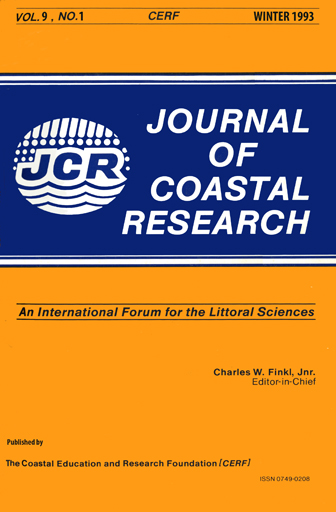Holocene Filling of an Estuarine Lagoon Along the Mesotidal Coast of Huelva: The Piedras River Mouth, Southwestern Spain
Keywords:
Littoral processes, tidal prism, estuarine facies, spit elongation, Gulf of CadixAbstract
The mesotidal coast of Huelva (S.W. Spain) is a tide-dominated (mixed energy) coastline type. This littoral zone is subject to a warm-temperate climate. Tidal regime is both mesotidal and semidiurnal with a slight diurnal inequality. The Piedras River mouth operates like an estuarine lagoon, where sediment supply is of dominantly marine provenance. Depositional facies along the inner estuary includes: (1) channel, (2) active channel margin, (3) salt marsh and (4) sterile marsh facies. All these facies are very similar to those described in other locations. Inner facies are asociated along the estuary mouth with spit facies and related environments: beach and dunes. Three stages in recent evolution of Piedras Estuary have been distinguished. The estuary-mouth morphology has evolved from a barrier-island system into an elongated spit accretion due to a decrease of the tidal prism. Two processes have changed the tidal prism: (1) estuary tilling and (2) dam construction.


